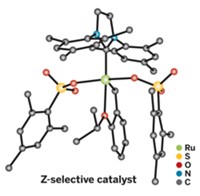Advertisement
Grab your lab coat. Let's get started
Welcome!
Welcome!
Create an account below to get 6 C&EN articles per month, receive newsletters and more - all free.
It seems this is your first time logging in online. Please enter the following information to continue.
As an ACS member you automatically get access to this site. All we need is few more details to create your reading experience.
Not you? Sign in with a different account.
Not you? Sign in with a different account.
ERROR 1
ERROR 1
ERROR 2
ERROR 2
ERROR 2
ERROR 2
ERROR 2
Password and Confirm password must match.
If you have an ACS member number, please enter it here so we can link this account to your membership. (optional)
ERROR 2
ACS values your privacy. By submitting your information, you are gaining access to C&EN and subscribing to our weekly newsletter. We use the information you provide to make your reading experience better, and we will never sell your data to third party members.
Environment
Clarity On Stereocomplexes
January 5, 2015
| A version of this story appeared in
Volume 93, Issue 1
Nov. 17, 2014, page 21: The Environmental & Marine Project Management Agency is not part of Germany’s Jacobs University. Rather, it manages the Micro B3 marine biotechnology project for Jacobs University.
I read with interest the article concerning the work of the Geoffrey W. Coates group in preparing poly(propylene succinate) stereocomplexes (C&EN, Nov. 17, 2014, page 5). As part of a department known for our work on plastics materials, design, and processing, I’m always excited to see polymer chemists coming up with new and interesting materials that we may eventually get to work with.
That said, I would like to offer one correction to a statement made in the article that the poly(propylene succinate) stereocomplex identified was “the first known example for a polyester.” Stereocomplexes based on poly(lactic acid), the well-known biodegradable polyester, have been studied for more than a decade, and their commercialization is well under way.
While this should in no way detract from the work Coates and colleagues have done, it’s important to get this right.
Daniel Schmidt
Lowell, Mass.




Join the conversation
Contact the reporter
Submit a Letter to the Editor for publication
Engage with us on Twitter